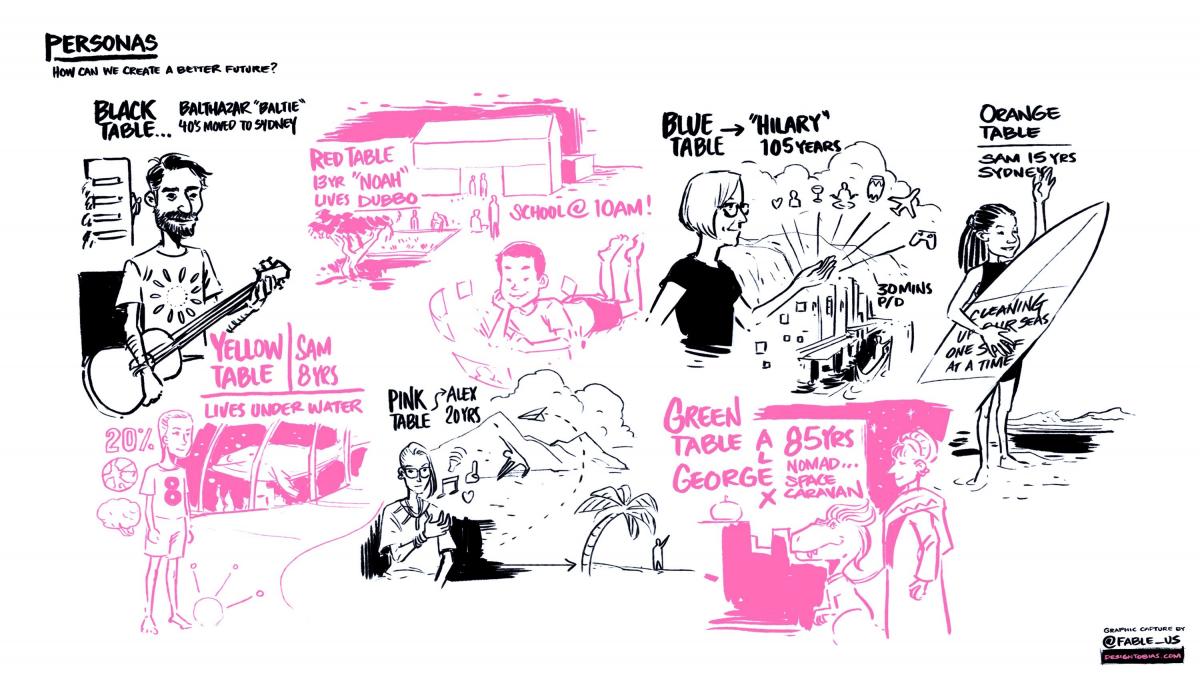In the public sector we provide critical services to people, butâ like all sectors â we have increasing complexity, ever-changing user needs, emerging technologies and trends and a backlog of work that keeps growing. So, it's easy to fall into the trap of believing you are too busy to try something different, and the pattern continues, with the entire workforces becoming reactive to change. This drives short-term fixes at the cost of long-term, sustainable improvements, with many seeing true transformation as a 'nice to have' rather than a path to solve the problem.
What to do? How do we transform our public sectors to be fit-for-purpose to meet the increasingly complex needs and faster pace of the 21st century? Most five to 10-year plans reflect the status quo, but what if we looked further ahead, could we design a better future to guide the steps we take today?
We reached out to our friends at the Museum of Applied Arts and Sciences (MAAS) to co-run an experimental 'futurespective' to explore what 'good' could look like if we were to briefly abandon our usual constraints. We hoped it would provide a useful model to broaden our collective thinking, inspire a formative approach to problem solving, help service delivery teams design beyond the short term-ism of websites and apps, and reverse engineer the digital public infrastructure we need for the 21st century. We also hoped it would inspire people individually to design better futures in everything they do, rather than reimplementing the past with shiny new things.
It was a very informal exploration of alternative futures by a group of passionate change makers taking a moment to explore transformative change. We had presentations about emerging technologies, trends and the '50-year optimistic futures' work from New Zealand, but we mostly focused on what a good day would look like for a person, to tap into the values, needs, fears and opportunities for life in NSW.
Futurespective - Designing and building better futures for NSW (PDF, 1.64 MB)
Overcoming biases to plan a 'good future'
There are numerous challenges facing society today which impact on how we plan for 'good futures'. These include the sheer volume of incidental data, declining trust from the public, social polarisation and the rise of extreme views finding a voice, the speed information can be transmitted and the digital divide between those with access and skills and those without.
Dr Ryan Young, Senior Advisor with the National Security College Futures Hub, says people typically fall into four key biases. Planning for:
- the future to be the same as today
- the future according to a strategic plan put forward by an organisation or government
- the worst or best-case scenario
- for what you want to see happen in the future.
Dr Young encouraged participants to embrace complexity when thinking about the future, because as human beings we're very good at thinking inside our own prism. He encouraged attendees to:
- think about insights
- actively go out and counter bias by embracing other views
- get people to tell you their stories.
However you design your future, it is imperative to remember that it is not a 'one and done' task. As the world keeps changing, so too should our planned futures. Like us, strategies and plans need to adapt, shift and reframe.
So where do we start?
To get everyone thinking creatively, attendees debated both 'for' and 'against' a range of topics, through a 'future lens'. These topics included:
- big business will control all emerging technology
- embedded wearables will do more harm than good
- human workers will become obsolete
- gene selection will be the norm
- everything will be 3D printed.
Groups then created personas, or imagined people, living in 2070, deciding on their age, where they live and what a 'good future' would look like. The social, political, environmental, health, wellbeing, cultural and economic factors of 2070 were all considered for that persona. These were the personas that were created:

This activity allowed us to think about what we might be taking with us (or what we're leaving behind), who was missing from the conversation and what the role of government and cultural institutions could be. It also helped us consider future social and digital infrastructure needs.
Where do we go from here?
Activities like this help us to imagine and design services and solutions now that can grow and adapt as we move into the future. We'd love to collaborate on more work in this space, so please contact us if this strikes a chord. We'd love to hear from you send us an email dna@finance.nsw.gov.au.